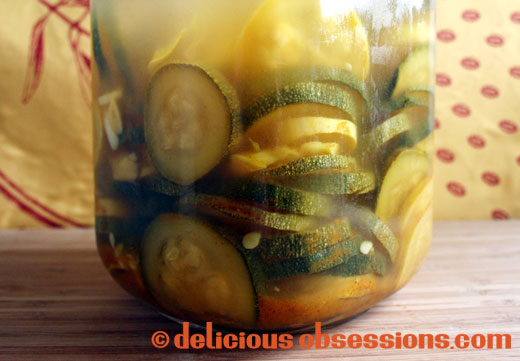FTC Disclosure: Delicious Obsessions may receive comissions from purchases made through links in this article. As an Amazon Associate I earn from qualifying purchases.Read our full terms and conditions here.
This is a super simple ferment. Plus, summer squash and zucchini are available in abundance right now, so I’ve been enjoying them in a bunch of different ways. This recipe is one of my favorites. Make sure you use organic squash and zucchini to avoid potential GMOs.
I can’t take credit for the Indian spiced ferments. I owe that idea all to Melanie at Pickle Me Too. I had never considered adding curry powder or other Indian spices to my ferments until I made her Lactofermented Indian Spiced Cauliflower a few weeks back. That was probably my most favorite ferment to date!
You can use whatever curry powder you have, or whatever combination of Indian spices that you like. I love my homemade curry powder blend, so that is what I used in this recipe. Did I mention it’s simple?
Lactofermented Curried Squash and Zucchini Pickles
makes 2 liters – I recommend the anaerobic fermenting systems from The Probiotic Jar.
Ingredients
- 3 organic yellow squash
- 3 organic green zucchini
- 5 cloves organic garlic, sliced, diced, or smashed
- 2-4 tbsp. curry powder
- 2 quarts of 2% brine (19 grams of salt to 4 cups of water)
Instructions
1. Slice your zucchini and squash to your desired thickness. I recommend leaving them kind of thick because they do break down a bit during fermenting.
2. Add your chopped, crushed, or sliced garlic into your 2-liter anaerobic fermenting jar.
3. Pack the zucchini and squash slices on top of the garlic. Pack them down as tight as you possibly can. They really do shrink a lot, so you’ll be surprised how much you can pack in there. Don’t fill past the shoulder, so that it has room to expand.
4. Place a weight on top of the vegetables. This ensures they stay under the brine during the fermenting process.
5. Pour your brine over the vegetables until they and the weight are covered. You don’t want to fill too full. Make sure there is a good inch or more for expansion room.
6. Insert the airlock into the anaerobic jar’s lid and add 1.5 tbsp. of water. Close the latch on the lid and make sure it is secure.
7. Move your jar to a spot in your house where it will be undisturbed during the fermentation process. Wrap the jar in a towel to keep out any UV light, which damages the good bacteria.
8. Let the veggies go for 2 days and then check them. You should see bubbles on the inside of the jar. This means there is active fermentation happening. They will be done when there are no more bubbles rising to the top (mine took 5 days). You can tap the jar to see if there are any bubbles. When there are no more, you can move to the fridge and let chill completely before eating.
9. Enjoy!


6 Comments